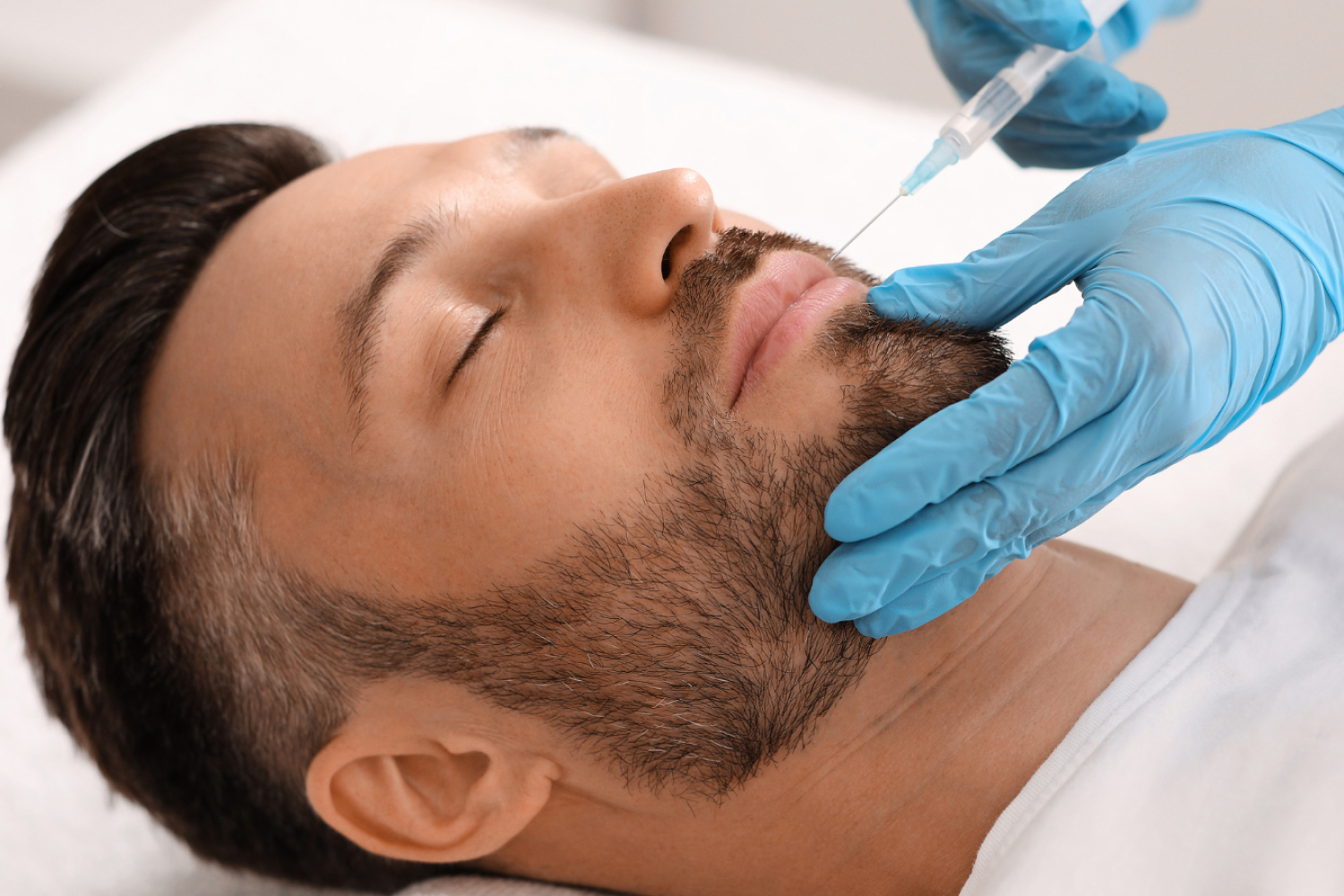Facial Masculinization: The Medical Art of Enhancing Male Strength
In aesthetic medicine, every face tells a story.
In the case of men, demand has grown significantly: they seek to look less tired, more attractive, and with features that convey strength, power, and confidence.
From the age of 40, signs of skin laxity, loss of jawline definition, and a dull gaze become the main concerns. This is where facial masculinization techniques come into play: a combination of corrections and strategic projections that restore a masculine character to the face.
What is Facial Masculinization?
Facial masculinization is a set of medical-aesthetic techniques aimed at enhancing features that are socially and aesthetically associated with masculinity:
- Defined jawline
- Laterally projected cheekbones
- Wide and proportionate chin
- Forehead with supraorbital prominence
- Absence of tiredness in the eyes
It is not about changing the patient’s identity, but about balancing and highlighting proportions, eliminating features that may convey weakness or fatigue.
Initial Diagnosis
Before any treatment, it is essential to systematically assess:
- Tired gaze: Infraorbital hollows, loss of volume in temples and cheeks.
- Sagging: Especially in the jawline and submental region.
- Negative emotional perception: Drooping eyes that convey sadness or apathy.
A typical example: a 47-year-old man with loss of jawline integrity, excess tissue in the midface area, and poorly projected lateral cheekbones.
Key Masculinization Strategies
The technique is not random: every projection and every filler follows precise anatomical and aesthetic criteria.
Jawline and Chin
- Goal: Straight jawline and mandibular angle of 90° to 94°.
- Procedure: High-density hyaluronic acid filler (e.g., Aliaxin Superior Volume (SV)) to connect “elevations” and fill “depressions,” achieving a defined and symmetrical line.
- Masculine chin: As wide as the mouth and aligned with the medial limbal line of the eyes.
Cheekbones and Zygomatic Arch
- Lateral projection to avoid feminization.
- Definition of the zygomatic arch without excessive medial volume.
Periorbital Area
- Correction of dark circles and lifting of the brow tail to neutralize negative vectors.
- Avoid overfilling the forehead, which can give a childlike appearance.
Other Anatomical Details
- Maintain fullness in the temporal muscle.
- Correct medial laxity to reinforce the jawline.
- Adjust the nose if irregularities or tip drooping are present.
Benefits of Facial Masculinization
- Immediate improvement in social perception (greater strength, leadership, and confidence).
- Rejuvenating effect without feminizing the face.
- Full customization according to the patient’s age, features, and goals.
Conclusion
Facial masculinization is not just a trend—it is a specialization within aesthetic medicine that requires anatomical knowledge, aesthetic judgment, and technical precision. Knowing how to project, correct, and balance is what allows a masculine face to gain presence and attractiveness without losing its essence.
Do you want to master facial masculinization techniques and deliver high-impact results to your male patients? Discover our hands-on courses at CIME Academy.
Location: Calle Entenza Nº 144, 08929 Barcelona – Clínica CIME Barcelona
WhatsApp: +34 690 864 816
E-Mail: secretaria@cimeacademy.com




